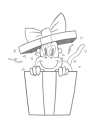Give a gift
Give a gift card for art students to use on anything in the Proko store.
Or gift this course:

About instructor
Founder of Proko, artist and teacher of drawing, painting, and anatomy. I try to make my lessons fun and ultra packed with information.
























The reference image of a ball is in the Downloads!
Level 1
Welcome back! Your next project is to shade a sphere like I did in the last lesson.
The most important aspect of this exercise is getting your value relationships correct. If your edges are rough, and your spheres look like they're sculpted from clay or play-doh, that's totally fine!
Level 2
You’ll be doing timed studies. This will force you to internalize the process and improve efficiency.
Reducing time forces you to prioritize. Taking 5 minutes instead of an hour to shade a sphere means cutting 57 minutes of something. You have to identify the critical 5% of effort creating the illusion of depth. You can carry that knowledge over to your longer drawings and spend more of your effort on those critical things.
Timed studies also build mark-making efficiency and better draftsmanship. You don't have time to overwork your lines and smudge things around. With no time to overwork your lines, you have to practice putting down a few strokes that indicate your intention.
Submit Your Drawings
After you’re done, upload your completed sphere drawings below. And try to reflect on it. What did you struggle with, what worked, what didn't. This helps me provide better feedback and allows you to practice more deliberately.
Level 2, write down what you prioritized, what you removed, if your approach changed at all between the studies, and anything you learned about efficient rendering.
Deadline - submit by April 18, 2025 for a chance to be in the critique video!